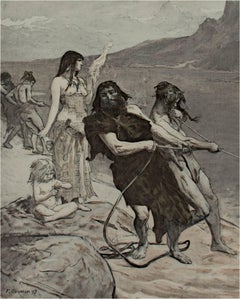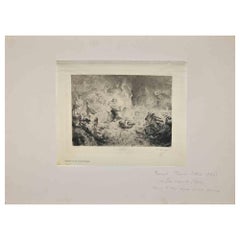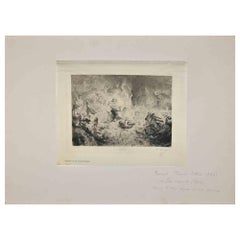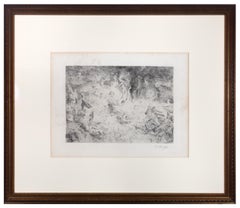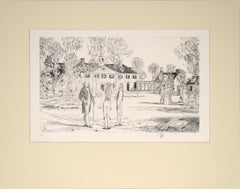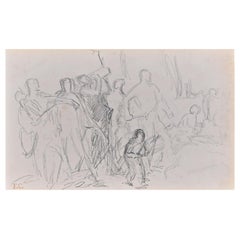Fernand Cormon Art
Fernand Cormon was a French painter born in Paris. He became a pupil of Alexandre Cabanel, Eugène Fromentin and Jean-François Portaels. At an early age, he attracted attention for the perceived sensationalism in his art. Although for a time his powerful brush dwelled with particular delight on scenes of bloodshed, such as the Murder in the Seraglio (1868) and the Death of Ravana, King of Lanka at the Toulouse Museum. Cormon was appointed to the Legion of Honor in 1880. Subsequently, he also devoted himself to portraiture. Being well-accepted at the annual Salon, Cormon also ran an art school, the Atelier Cormon, in the 1880s. There, he tried to guide his students to create paintings that would be accepted by the Salon's jury. Among the students with whom he was unsuccessful at this point were Henri de Toulouse-Lautrec, Louis Anquetin, Eugène Boch, Paul Tampier, Émile Bernard and Vincent van Gogh.
1890s Art Nouveau Fernand Cormon Art
Lithograph
1890s Art Nouveau Fernand Cormon Art
Lithograph
Early 1900s Art Nouveau Fernand Cormon Art
Etching
Early 1900s Art Nouveau Fernand Cormon Art
Etching
1890s Academic Fernand Cormon Art
Etching, Paper, Ink, Laid Paper
Late 19th Century Art Nouveau Fernand Cormon Art
Etching
1930s American Impressionist Fernand Cormon Art
Ink, Etching, Laid Paper
1890s Art Nouveau Fernand Cormon Art
Lithograph
Early 1900s Art Nouveau Fernand Cormon Art
Drypoint, Etching
1970s Academic Fernand Cormon Art
Archival Paper, Etching
1950s Academic Fernand Cormon Art
Paper, Lithograph
1920s Art Nouveau Fernand Cormon Art
Etching
1890s Academic Fernand Cormon Art
Archival Paper, Etching
1890s Art Nouveau Fernand Cormon Art
Lithograph
1890s Art Nouveau Fernand Cormon Art
Paper, Lithograph
Early 1900s Art Nouveau Fernand Cormon Art
Lithograph
Late 19th Century Art Nouveau Fernand Cormon Art
Paper, Lithograph
Late 19th Century Art Nouveau Fernand Cormon Art
Pencil
